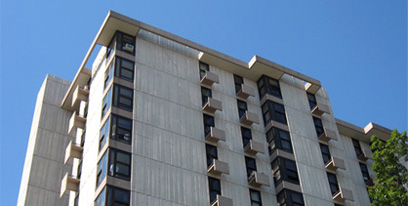 SEATTLE—July 22, 2009—Addressing homelessness in King County is a puzzle that many are working to solve. The Seattle Housing Authority plans to move forward with one piece of the solution by partnering with Public Health – Seattle and King County to locate a medical respite care facility at Jefferson Terrace.
SEATTLE—July 22, 2009—Addressing homelessness in King County is a puzzle that many are working to solve. The Seattle Housing Authority plans to move forward with one piece of the solution by partnering with Public Health – Seattle and King County to locate a medical respite care facility at Jefferson Terrace.
On June 29, 2009, the project received initial approval for an economic stimulus grant of $375,000 through the U.S. Department of Health and Human Services.
Medical respite care offers temporary housing for homeless people who need a safe place to heal after being treated and discharged from local hospitals. Health care staff provides services daily to support recuperation for people who might otherwise never get well if they remain homeless.
"Providing a location for this kind of facility is one way that SHA can contribute to serving our community's homeless population as part of the Ten Year Plan to End Homelessness," explained Tom Tierney, SHA's Executive Director.
The partnership is not looking to establish a full-blown medical facility at Jefferson Terrace. Patients are fully able to move under their own power and do not need intensive medical care. However, staff is present around the clock to ensure well-being and security. Special services such as counseling and housing assistance are also available.
Jefferson Terrace, a Low Income Public Housing building in Seattle's First Hill neighborhood, offers a good fit for the proposed facility. Three major hospitals are just blocks away. The building's main entrance is directly across the street from Harborview Hospital. Referrals to the facility would come from hospitals all around King County.
The Ten Year Plan to End Homelessness is a regional effort that addresses conditions that contribute to homelessness. Its goal is to increase the availability of affordable housing and coordinate the supportive services that help people remain housed and healthy.
To accommodate the respite care facility, minor modifications are planned to the seventh floor of the 17-story Jefferson Terrace building. The studio apartments on this floor will be converted to semi-private rooms with one or two beds for respite care patients. A staff station and security cameras on the floor will provide oversight. Men and women will be housed on different wings of the floor. A separate, dedicated entrance to the respite care facility is planned, independent of the entrance used by the building's permanent residents.
Construction is slated for the fall of 2009, with the goal of opening the doors in early 2010. Current seventh floor residents are choosing to move to other units in the building, or other SHA properties.
For years, Janna Wilson, manager of the Healthcare for the Homeless programs at Public Health - Seattle and King County, has worked with a group of area hospitals to expand the current respite care capacity in King County. In 2008, the idea to locate the facility at Jefferson Terrace gained wide support.
After regular meetings and updates since November 2008, the proposal enjoys support among current residents of the building. Many residents are formerly homeless themselves, and share the goal of ensuring that a temporary safe haven is available for the homeless to regain their health and have access to resources for seeking permanent housing somewhere else.
The $375,000 grant for the respite care facility was part of a total of $1,025,635 that was awarded to Public Health – Seattle and King County Funds were allocated from the formula-based Capital Improvement Program as part of the American Recovery and Reinvestment Act, directed at improving health care through community health centers. The grant was awarded through the federal Department of Health and Human Services.
SHA and Public Health will provide the latest updates on the plan for Jefferson Terrace residents at a meeting scheduled in the building's community room for 3:30 p.m., July 27, 2009. The two agencies hope to sign a lease for the program this summer.
